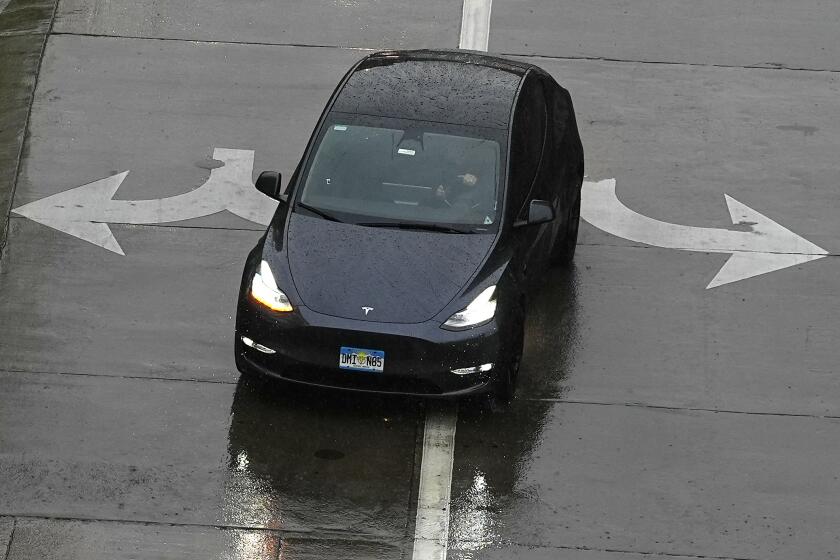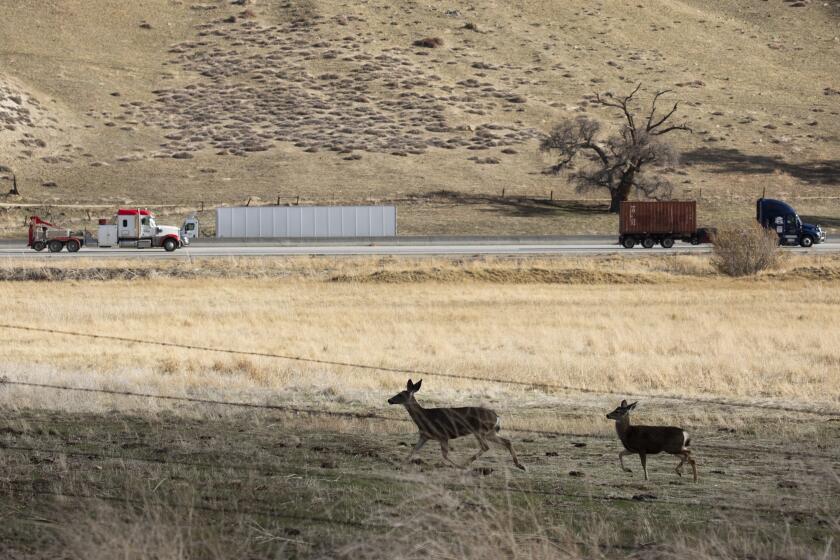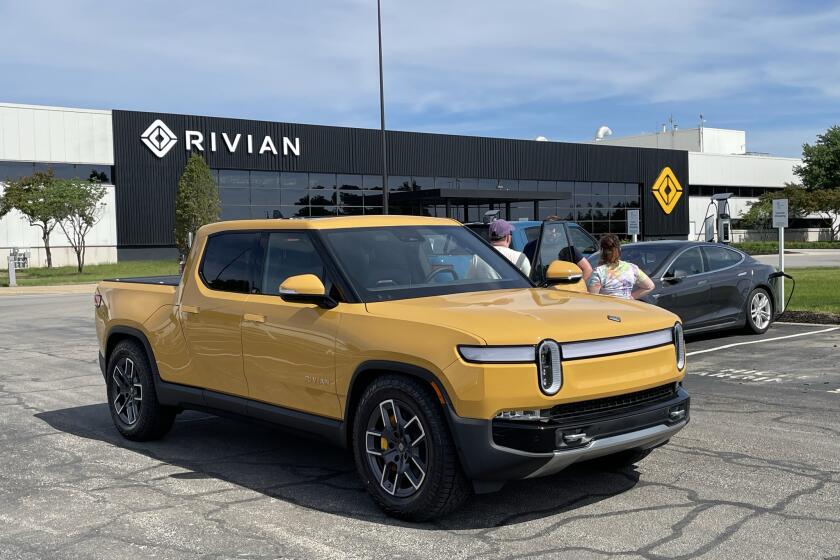Greenhouse Gases Are Targeted
California plans to require automobile manufacturers to reduce emissions of greenhouse gases in new cars by nearly 30% over the next decade as it implements the first regulation in the world to tackle tailpipe exhaust linked to global warming.
The regulation, expected to be outlined Monday by the California Air Resources Board, is being closely watched elsewhere. Several other states, impatient with the federal government’s inaction on the heat-trapping gases that many scientists say contribute to climate change, may copy California’s standards, which are mandated by a 2002 state law. Other nations such as Canada also are monitoring California’s approach to limiting carbon dioxide and other greenhouse gas exhaust from trucks and cars.
“Time and time again, California has demonstrated that better vehicles can be built and that has had an impact not only on California but elsewhere in the country and the world,” said Alan C. Lloyd, chairman of the Air Resources Board. “I think we have done some tremendous regulation reducing fine particles and other [sources of air pollution]. But by coming up with vehicles that help reduce greenhouse gases, we will have a significant impact worldwide.”
Auto makers, meanwhile, continue to assert that California has no right to demand the greenhouse gas restrictions and suggest they may sue to thwart them. The car companies contend the rules represent a backdoor attempt by the state, which makes up roughly 10% of the nation’s car market, to impose fuel economy standards stronger than those set by Washington.
In an early draft of the regulation, the Air Resources Board is proposing to reduce greenhouse gas emissions in new cars and trucks up to 29.2% by 2015. The reductions, state air experts contend, can be achieved largely with existing technologies such as transmissions that continually shift to find the ideal gear, alternative refrigerants in air-conditioning systems and engines that shut off while cars are standing still at red lights.
The regulation, which is set to be approved by the air board in Los Angeles in September, would begin to apply to cars and light-duty trucks in the 2009 model year.
The requirements would grow increasingly tougher, peaking in 2014. Air board officials estimate that the regulation would raise the cost of a car or truck by $328 for 2009 models, rising to $1,047 for 2015 models.
California’s goal is considered modest by some environmental groups, who contend that the state could easily require larger reductions using technologies already in use in some cars and trucks.
Relying on existing technologies, auto makers have volunteered to reduce greenhouse gas emissions by 25% in Europe by 2008 to stave off regulations threatened by the European Union.
“We think it makes sense for CARB to push the envelope,” said Jason Mark of the Union of Concerned Scientists, which released a report this year concluding that 40% reductions were possible.
“Compared to our analysis of what can be done, a 30% reduction seems conservative. But compared to zero, 30% is pretty good.”
Environmental groups also assert that auto makers will surely find new ways to make cars and trucks release fewer greenhouse gases, if California’s long history of forcing them to cut air pollution is any indication.
“The auto industry often innovates and comes up with cheaper and more ingenious solutions than anything the government regulators could have come up with,” said Roland Hwang, a policy analyst with the Natural Resources Defense Council.
“As we move forward with this program and Detroit sends its lawyers and lobbyists home and puts its engineers to work, they will be able to achieve much greater reductions,” Hwang added.
Auto makers, particularly the Big Three in Detroit, continue to chafe at the notion that California has the right to demand any changes in passenger vehicles to address global warming.
Since the state passed the 2002 law, auto makers have suggested that they intended to contest it in court on grounds that California was indirectly trying to set fuel economy standards, a power that lies with Washington.
The companies point out that measures to combat global warming in cars almost inevitably involve reducing the amount of fuel cars consume, because greenhouse gases are primarily released when gasoline burns during internal combustion.
Suing California “remains one option,” according to Eron Shosteck, spokesman for the Alliance of Automobile Manufacturers, which includes Ford, General Motors, Toyota, Volkswagen and Mitsubishi, among others.
“Auto makers would challenge any rule inconsistent with the federal fuel economy program,” Shosteck said.
But state regulators and environmental groups maintain that the global warming law would not impose tougher mileage standards than those set by the federal government.
Gov. Arnold Schwarzenegger has pledged to defend the global warming regulation from legal attacks and to ensure that it goes into effect.
Some auto industry officials have suggested that a recent U.S. Supreme Court ruling concluding that Southern California officials overstepped their authority in approving vehicle fleet rules bolsters their case that the global warming law goes too far.
The U.S. Environmental Protection Agency recently concluded that it could not regulate carbon dioxide under its existing powers because the greenhouse gas was not a pollutant.
That interpretation is hotly contested by many states, including California. In response to the lack of action in the nation’s capital, the governors of Washington, California and Oregon formed an alliance last year to combat climate change.
California is the only state that has a right to approve clean air laws stronger than those of the federal government.
Many states, particularly in the Northeast, have adopted California’s clean air rules, because they tend to be stronger. New York, New Jersey and Massachusetts are among the states that have indicated interest in adopting California’s greenhouse gas standards.
“Frankly, there are a lot of people, cities and states around the country that are tired of waiting for a federal policy” to address climate change, said Assemblywoman Fran Pavley (D-Agoura Hills), author of the global warming law.
“California, with 35 million people, has more cars than a lot of countries. It’s important for California to lead on this, because it may be the only way anything happens.”



